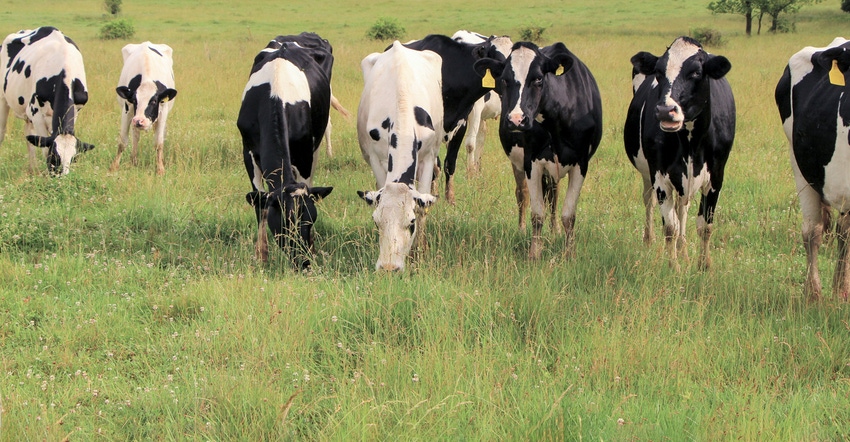
Editor’s note: This is the second article with a Missouri dairy farmer who shares how to manage a low-cost dairy operation. Today, he shares lessons for young dairy farmers on managing finances for a generational impact.
Over the years, Jack Dill has made more money milking cows than anything else.
To put it in context, he explains, 30 years ago when he was buying land for $500 an acre, a young farmer could make money milking cows. “Now, good land is $3,000 per acre,” he says. “It is harder to justify.”
Still, there are lessons in finance that worked in the 1970s that still hold true today for the next generation.
“Dad had more common sense than any human being I've ever met in my life,” Dill says. His father, Alva, made it a practice of paying off his debt.
“When I graduated from high school, he had 295 acres of land, and it was all paid for,” he adds. Anytime his dad was not busy on the farm, he was working to make money to clear debt. “When you look at what things cost you back then and the interest rate, you had to pay loans back quick,” Dill explains. “If you had long-term debt, it was bleeding you dry."
It is a lesson the Alva Dill and Sons Dairy Farm uses today.
Related: The making of a low-input dairy farm
Next generation financial advice
When it comes to dairy farming, Dill does not have long-term financial obligations. Even in his early years, it was always short-term debt.
Dill once paid off an entire farm in 11 months and 13 days. It was his second farm. “I still remember how long it took me to this day,” he says.
Still, the Dallas County dairy farmer realizes the industry is not the same as it was in the 1970s. “The bargain is not on cheap land,” he says. “Land is priced more than it’s worth. The bargain now is interest rates.” He admits it is an odd statement for a man who likes to run on cash and short-term bank notes.

DEVOTED TO DAIRY: Farmer Jack Dill works with Dairy Farmers of America to help fellow producers market their milk collectively. He also promotes the milk industry and mentors the next generation of dairy farmers.

Dill says young farmers should focus on purchasing items that are appreciable assets and lock in interest rates for as long as they can.
Looking around the Alva Dill and Sons Dairy Farm, there is not the latest and greatest in equipment. “We try not to bind up our cash in depreciable assets,” he adds. “While that new combine may help with harvest, young farmers may get by with older equipment. Buy things that will make you money first.”
He says the older generation needs to help the next dairy farmers learn how to manage farm finances.
“It is really a shame that we have young farmers who want to milk cows, who are willing to make sacrifices and are willing to take those chances, and they can’t afford to stay in the business,” Dill says. “We are losing a resource that is going to cost our society dearly in the long run. We need young people.”
Boosting confidence in dairy
Dill is a councilman for Dairy Farmers of America, a cooperative that pools and sells milk from independent dairy farms. It is made up of more than 13,000 dairy families.
“I work for every farmer in my district,” he says. “It’s my job and they pay me, but I love promoting agriculture and dairy.”
This year, when farmers in the area were forced to dump milk, Dill was one that received the call. “It was such a depressing feeling because you do all this work to produce a product that you take great pride in, that you know is one of the nutritious miracle foods, and we were going to have to dump it all.”
Fortunately, another phone call informed the farm it would not have to dispose of the milk. Still, several dairies around southwest Missouri were not so fortunate. But as a cooperative, Dill says, farmer members share in the gains and the losses.
“You’re not always going to get paid what your product is worth all the time because we have swings in the marketplace,” he says. “That’s capitalism.” But he has an idea on improving milk prices.
Ten cents. That is the difference between making a living in the dairy industry or struggling in the business, he says. “If consumers were willing to pay 10 cents a gallon more and that money goes directly to the farmer, it can make a change today in our industry and for future dairy farmers.”
About the Author(s)
You May Also Like






